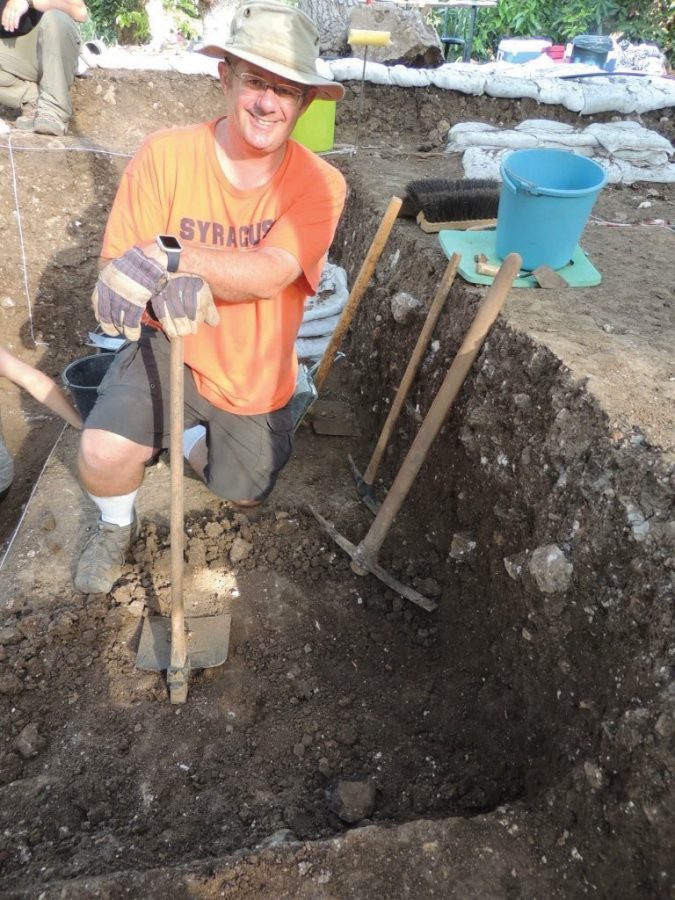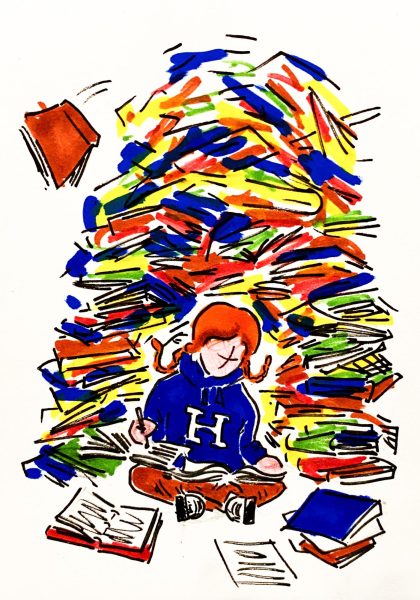Excursion Leaders’ Experiences
Contributing writer Meera Kasturi ’22, Staff Writer Lucy Haswell ’20 , and Editor-In-Chief Zoe Bank ’19 conducted interviews with faculty members who traveled with students on their Hotchkiss trips to gain a better understanding of their experiences.
Dr. Jason Larson
Faculty Leader of the Israel Trip
What is the main goal of the Hotchkiss in Israel archaeology program?
The main goal is to promote the idea that we don’t always have to be in a classroom to learn. In a sense, the land of Israel will be serving as our classroom. We will be doing some archeology and learning how it shapes the land as well as how people think of the land.
What does the daily schedule look like?
In the morning, we will depart from the field school at about quarter to 5, and start digging at 5 o’clock in the morning, and then get a big breakfast at 8:30. Then we dig till 11, we then get tea, and we dig a bit more till lunch, and then we pack our things and head back to the field school. After then, it’s basically free time. This is just for the dig week. After the dig week, we will be traveling to different spots, such as the coast of Caesarea, and doing some snorkeling or traveling to The Galleria.
What’s the most difficult part of planning a travel program?
Uncertainty – figuring out how many people are going and how much it will cost to see where we can go.
How do you select the student travelers?
We first look at people who might have scheduling concerns and [whether] they have to miss a week of the trip. We also see whether a student might be able to go on this trip in two years versus someone who may only have this one opportunity. We want to maximize the opportunit[ies] for kids.
What is your biggest fear when leading a program?
My biggest fear is that students will get there and think “this is a waste of my time.” Other than that, the more obvious concerns are that somebody gets lost in a crowd, but [that is a] remote possibility.
What is your favorite memory from the 2017 trip?
Seeing Caesarea for the first time was pretty amazing, along with actually excavating with a group of people. Seeing a number of holy pilgrimage sites and going to see Jerusalem and the whole city – it’s just a magical place to be.
Mr. Sam King
Faculty Leader of the South Asia Trip
What was the main goal of the Hotchkiss in South Asia program?
The aim of the trip was to provide students with an immersive exploration of South Asian culture, religion, and art. My hope was that students would experience very different ways of living in, understanding, and imagining reality. I also hoped that students would develop their capacities for empathy, tolerance, and open-mindedness as important virtues in an increasingly interconnected world. In Sri Lanka and India, students had the opportunity to stay with host families, take a batik art class, visit Buddhist, Hindu, and Islamic places of worship, volunteer at a children’s orphanage, visit Round Square partner school Daly College, and curate individual learning projects based on specific interest areas developed over the course of the experience.
What was the most difficult part of the planning process?
The most difficult part of the planning process was probably logistical issues surrounding Visa applications, hotel reservations, and budgeting. The number of students for the trip fluctuated at times, and we had to tweak some of our programmatic considerations, which is not always easy when making plans [from] the other side of the world!
Do you have a favorite memory from the trip?
There are so many amazing memories; it is difficult to choose between them. It was deeply rewarding to bring students to the rural Buddhist village where I lived and conducted research for almost a year. I fondly remember our trip to a mosque on the eve of Ramadan Eid al-Fitr, during which we had the opportunity to join practitioners in breaking fast at sundown, observe prayers, and ask questions of Muslim leaders in the wake of recent anti-Muslim violence by extremist Buddhists. On a more lighthearted note, I remember the group’s general aversion to eating the pungent-smelling durian at a roadside fruit vendor!
Mr. Adam Lang
Faculty Leader of the Sweden Trip
What was the main goal of the trip to Sweden?
The main goal of the trip was to broaden students’ understanding of some real-world problems, one of them being the conflict in Syria and the mass refugee immigration out of Syria. It’s something that we read about in the paper, but having students really see the place where these refugees [have] landed, and learn about the economic and political effects of their influx into the country allowed them to understand the issue from a human perspective. From a human-centered design perspective, it’s really important for the students to understand how the stakeholders are experiencing [an issue] – whether it be refugees, citizens, officials, neighbors.
What was your favorite memory from your time in Sweden?
I really liked collaborating with Megan [Marini], a designer from New York City. I loved our work space. The aesthetic of the Swedish co-workspace, was a whole new scene. I enjoyed biking in Copenhagen; that was so much fun. I enjoy walking around cities, so that was really interesting.
Did you experience anything on the trip that helps you see your home culture differently?
I think that the Hotchkiss community is really diverse and dynamic, but still we are living in a really isolated place in the Northwest corner of Connecticut, so it is valuable to get off campus and get out of this mindset. Although I love it here, it is valuable to get away. We left our town, our city, and even our continent, and we went to a place where the problems are real and incredibly different on a day-to-day basis. One of the big pieces of value that I took away from it and I hope students take away from it was perspective. Being able to understand the challenges that these refugees…and…policymakers face and then being able to come home and say, “Wow, this place can be challenging to one’s spirit, but we have it pretty good here.” On a daily basis, we don’t have to fear for our lives from an oppressive regime. We have food and running water and we don’t have to escape.







